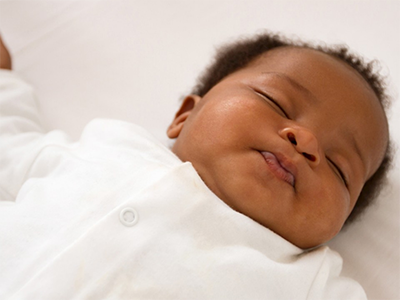Safety in your baby’s bedroom

It’s natural to find yourself checking your sleeping newborn to make sure everything is OK. You can also take simple and effective safe sleeping steps to minimize the risk of sudden unexpected death in infancy (SUDI including SIDS and fatal sleeping accidents).
SUDI (including SIDS and fatal sleeping accidents) risk factors:
Investigations into the deaths of children from sudden unexpected death in infancy (SUDI including SIDS and fatal sleeping accidents), have consistently shown that one or more of the following risk factors are associated with almost all SUDI-related infant deaths:
- sleeping baby on her tummy and side
- sleeping baby on soft surfaces (sofa, soft mattress, pillow, waterbed, lamb’s wool), with or without a parent
- baby’s face and head getting covered by bedding, which can lead to accidental suffocation and overheating – a known cause of SUDI (including SIDS and fatal sleeping accidents)
- Smoking during pregnancy or after birth.
Using safe sleeping practices for our babies can reduce sudden unexpected deaths in infancy (SUDI). Here are some tips:
1. Put babies to sleep on their backs
This is the safest position for healthy babies. Babies are more likely to die of SUDI (including SIDS and fatal sleeping accidents) if they sleep on their sides or tummies.
If you’re worried about your baby choking on vomit, it might help to know that healthy babies put to sleep on their backs are less likely to choke on vomit than babies put to sleep on their tummies or sides.
Once your baby can roll over (at around 4-6 months), keep putting him to sleep on his back, but let him find his own sleeping position.
2. Make sure babies’ heads can’t get covered while they’re sleeping
Put your baby low down in the cot, so her feet are near the bottom end. Tuck in the bed sheets securely so they can’t cover your baby’s head.
3. Avoid smoking
There’s strong evidence that exposure to second-hand smoke harms babies, and that smoking during pregnancy and after birth increases the risk of SUDI (including SIDS and fatal sleeping accidents). The link between SUDI and smoking is strong even when parents smoke away from their baby.
4. Use a cot that meets current Australian safety standards
only well-maintained cots built to strict safety standards are good enough for your baby.
5. Share a room
Have your baby in a cot in your room for the first 6-12 months.
6. Breastfeed your baby if you can
Breastfeeding reduces the risk of SUDI (including SIDS and fatal sleeping accidents) by more than half. Parents and carers of both breastfed and bottle-fed babies are advised to follow safe sleeping practices.
7. Avoid cot bumpers, soft toys and pillows
Babies have suffocated when they’ve rolled into cot bumpers, pillows or soft toys. It’s safest to keep them out of your baby’s cot.
8. Use a firm and well-fitting mattress
Make sure there are no gaps between the mattress and the edge of the cot, where a baby’s head could get jammed. Don’t tilt the mattress. If you’re using a portable cot, use only the firm, thin, well-fitting mattress that comes with it. Don’t add a second mattress or any padding over the mattress.
9. Avoid baby sleeping on couches or makeshift bedding
Sleeping on a couch, with or without someone else, is very dangerous for babies. Also beware of makeshift bedding. Some situations where your baby might be in danger include getting wedged between a mattress and a wall, getting stuck between pillows or cushions, or slipping down until his head is covered by blankets.
10. Dress your baby in clothing that’s warm, but not hot
Overheating is a risk factor for SUDI (including SIDS and fatal sleeping accidents). Ask yourself what you would wear to bed and use that as a guide. Keep your baby’s head uncovered indoors – this allows your baby to cool and not overheat. Don’t worry if your baby’s hands and feet feel cool – that’s normal.
11. Make sure your baby’s carers know how to protect against SUDI (including SIDS and fatal sleeping accidents)
It’s best not to assume that other people know about safe sleeping practices, educate other members of the family plus your nanny. In addition, it isn’t recommended to leave a baby sleeping in a pram unsupervised.
